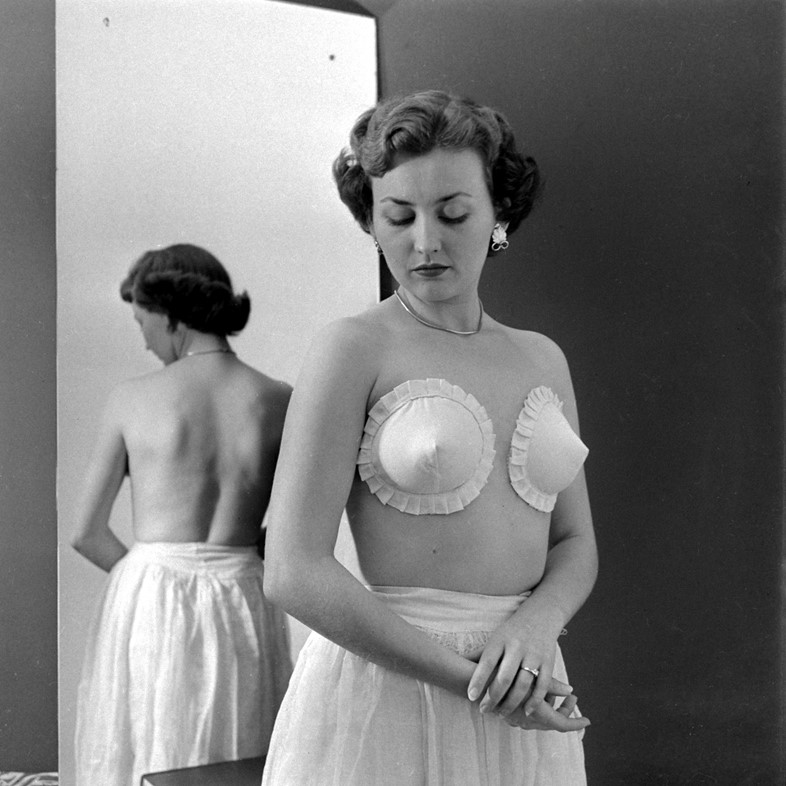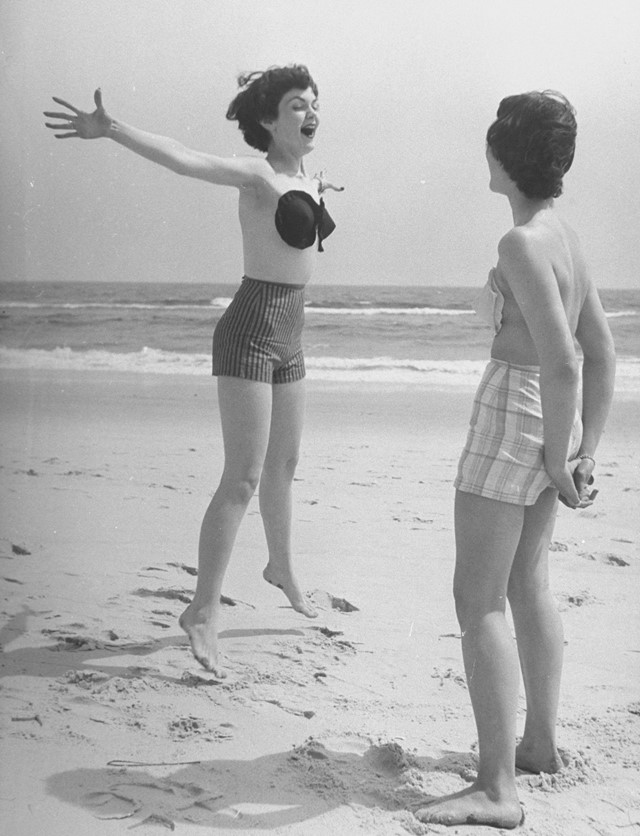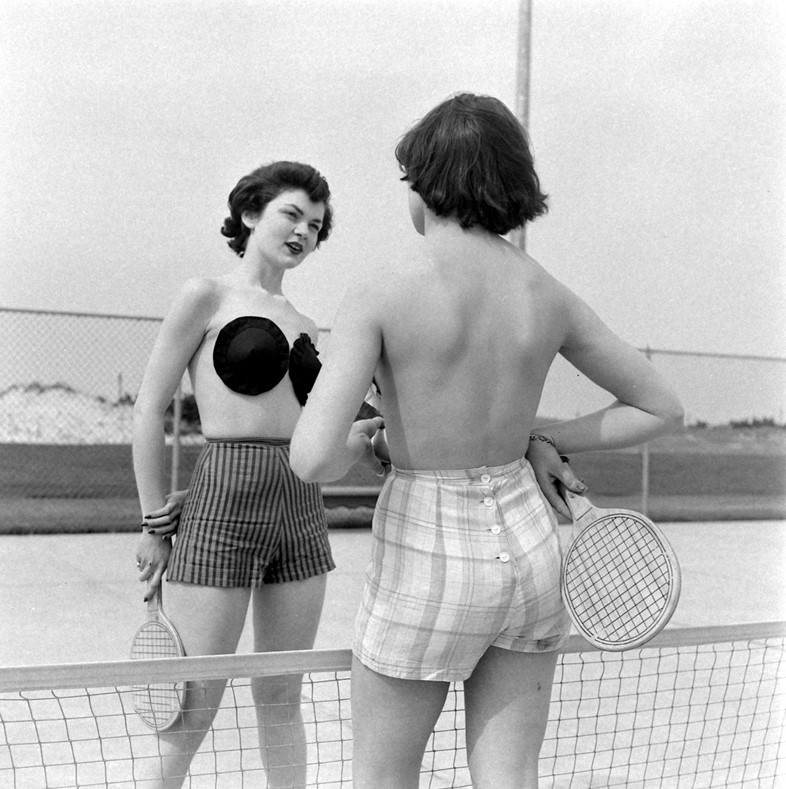In May 1949, a few short years after the end of the second world war, a daring innovation in beachwear was debuted on Jones Beach, New York. The adhesive brassiere, the brainchild of “Yaleman” industrialist Charles L Langs, was a bold proposition: a pair of discrete cups with frilled circumferences and sharp, protruding points (this was also the year Maidenform introduced its bullet bra), which could be worn as outerwear and facilitate an even tan. Backed with specially developed adhesive, these cloth cover-ups aimed to be strong enough to hold fast during vigorous exercise and yet be easy and painless to remove.
From the suite of photographs taken at the time, the Posĕs (pronounced Pose-ease) boasted day-to-night versatility: they could be worn at the beach with shorts and, later, with eveningwear, though it is assumed as undergarments. Wireless, strapless and backless, they came in a range of colours and patterns, and were, in their way, revolutionary. Yet they never quite took off, perhaps owing to the fact that the adhesive, known as the “rejuvenator”, had to be reapplied with each wear from an accompanying bottle. Still, Langs is to be applauded for his role in the evolution of the strapless bra and for his contribution, however peculiar, to beach apparel.




